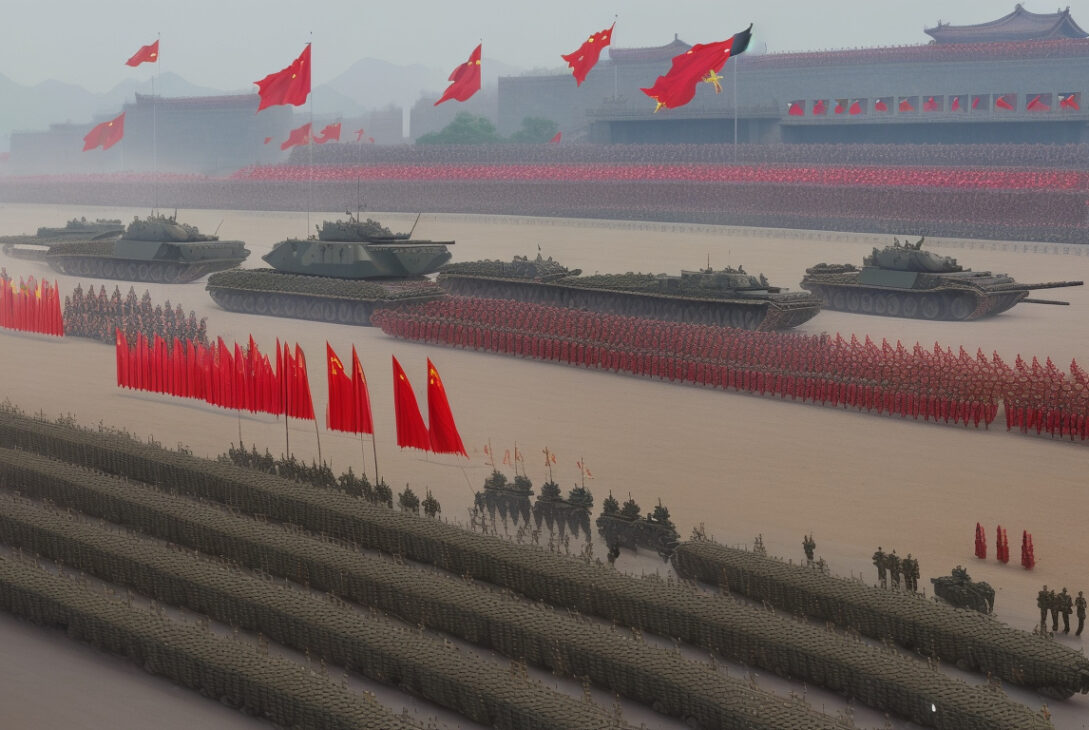China’s Recent Military Parade Highlights Urgent Need for Enhanced U.S. Deterrence, Experts Say
In a striking demonstration of military prowess, China hosted one of its largest-ever military technology parades on September 3, 2025, in Beijing’s Tiananmen Square. The event, commemorating the 80th anniversary of Victory Day marking Japan’s surrender in World War II, showcased an array of advanced weaponry—including fighter jets, hypersonic missiles, and AI-powered drones. The parade, attended by foreign dignitaries such as Russian President Vladimir Putin and North Korean leader Kim Jong Un, sends a strong signal of China’s growing military capabilities and regional ambitions.
Experts across Washington have responded to the parade by underscoring the urgent need for the United States to enhance its deterrence posture against an increasingly assertive China. The People’s Liberation Army (PLA) is on track to meet a 2027 readiness deadline aimed at enabling a possible invasion of Taiwan, raising alarms among U.S. analysts and lawmakers.
Parade Demonstrates China’s Accelerated Military Modernization
Among the headline-grabbing technologies exhibited were China’s full nuclear triad—land-based, sea-based, and air-based nuclear capabilities—in their first public display. The parade featured new advanced weapons such as the LY-1 laser weapon, an upgraded version of the Dongfeng-5 nuclear-capable intercontinental ballistic missile (ICBM), and the DF-61 ICBM designed for long-range nuclear delivery. Additionally, unconventional weapons such as the GJ-11 stealth drone, the large tube-shaped AJX002 drone resembling a submarine, and robotic four-legged “wolves” were on view.
“This was very much messaging targeted at U.S. counter-intervention capabilities,” said Kari Bingen, Director of the Aerospace Security Project at the Center for Strategic and International Studies (CSIS). “China is signaling that its hypersonic missiles, advanced torpedoes, large underwater drones, and wingman drones give it an ability to threaten U.S. forces even in places like Guam, undersea, and from air to surface.”
U.S. Experts Call for Expanded Arsenal and Stronger Alliances
The parade’s scope and technological sophistication have reinforced concerns that China is aggressively pursuing next-generation warfare capabilities, including in cyber, artificial intelligence, and stealth systems. Rep. Don Bacon (R-NE), chairman of the House Armed Services Subcommittee on Cyber, Information Technologies and Innovation, cautioned that China currently poses the “biggest cyber threat” to the U.S., with a cyber command reportedly ten times larger than that of the United States.
“There is a clear need to grow our capabilities in Cyber Command and to strengthen our deterrence posture overall,” Bacon said during a pre-recorded session at the annual Defense News Conference. He emphasized bolstering Taiwan’s defenses with advanced U.S. weaponry to deter Chinese aggression and advocated for increased defense spending to counter mounting threats.
Heather Williams, senior fellow at CSIS, remarked that the parade was meant to convey the formation of an alternative global order led by China rather than the U.S.-dominated world. Despite the parade featuring foreign allies such as Russia and North Korea, she clarified that this assembly does not represent a deep collective security alliance, describing it instead as an “alliance of convenience.” Nonetheless, the optics of the show of force are impactful in signaling China’s ambitions on the world stage.
Questions Remain Over Operational Readiness
While the parade demonstrated China’s impressive advancements, some analysts remain cautious about the true operational status of several showcased systems. Tom Karako, director of the Missile Defense Project at CSIS, described the event as a carefully choreographed display of “politics, propaganda, and pageantry.” He highlighted uncertainty about how many of the weapons are fully operational or deployed at a high readiness level versus simply being prototypes or symbolic.
Still, there is consensus that the parade marks a significant milestone in China’s military modernization campaign and raises the stakes for U.S. and allied defense planning in the Indo-Pacific region.
The Challenge Ahead: Enhancing Conventional Deterrence
Experts agree that China’s evolving arsenal presents complex challenges for conventional deterrence. According to Bingen, it is “critical” for the U.S. and its partners to continue investing in shipbuilding and other capabilities that blunt China’s ability to project power in contested areas.
“The parade is a ratification of where China is going militarily and underscores the difficulty of deterring them conventionally,” she said. “This makes it even more important to maintain and strengthen our deterrence, including with allies.”
The recent discussions held around Washington, including at the Defense News Conference and CSIS panels, reflect growing consensus among officials and analysts: time is short to implement a more robust U.S. deterrent strategy that combines advanced technology development, strategic partnerships, and effective signaling to counter China’s expanding military reach.
Conclusion
China’s Victory Day military parade showcased not only its advanced weaponry but also its broader strategic intent to challenge U.S. influence and regional stability. In response, U.S. experts and lawmakers urge accelerated investment in defense modernization, particularly in cyber and conventional capabilities, as well as deepening international alliances to maintain credible deterrence. As the PLA targets a 2027 timeline for readiness concerning Taiwan, the parade serves as a stark reminder of the shifting global military balance and the imperatives for U.S. national security.
Written by Brandi Vincent, Pentagon Correspondent for DefenseScoop, covering emerging technologies and defense policy.










